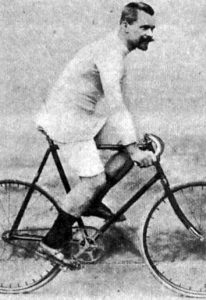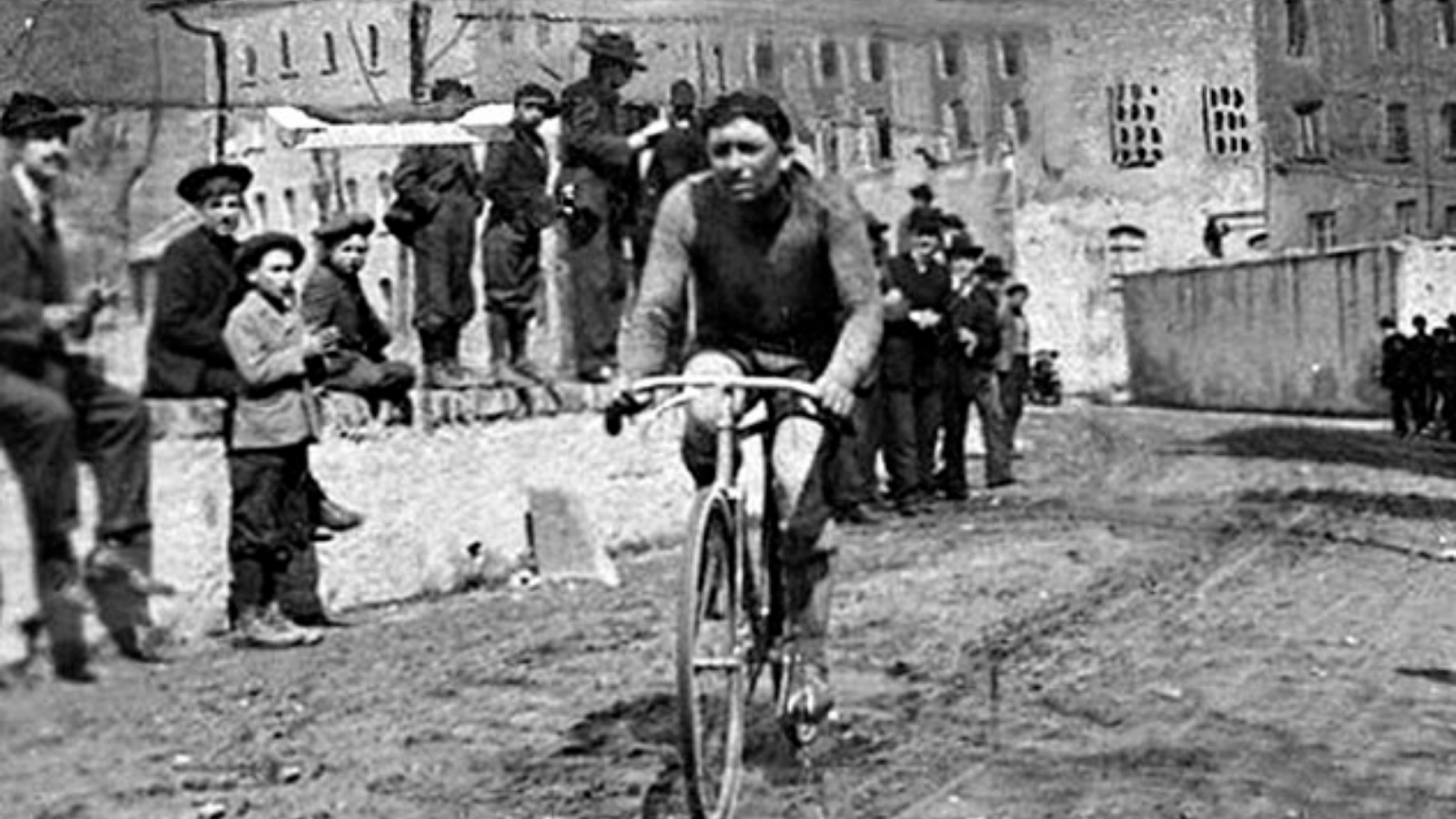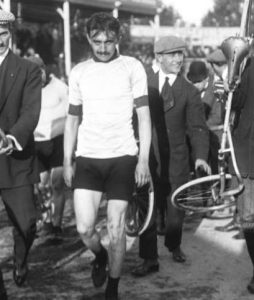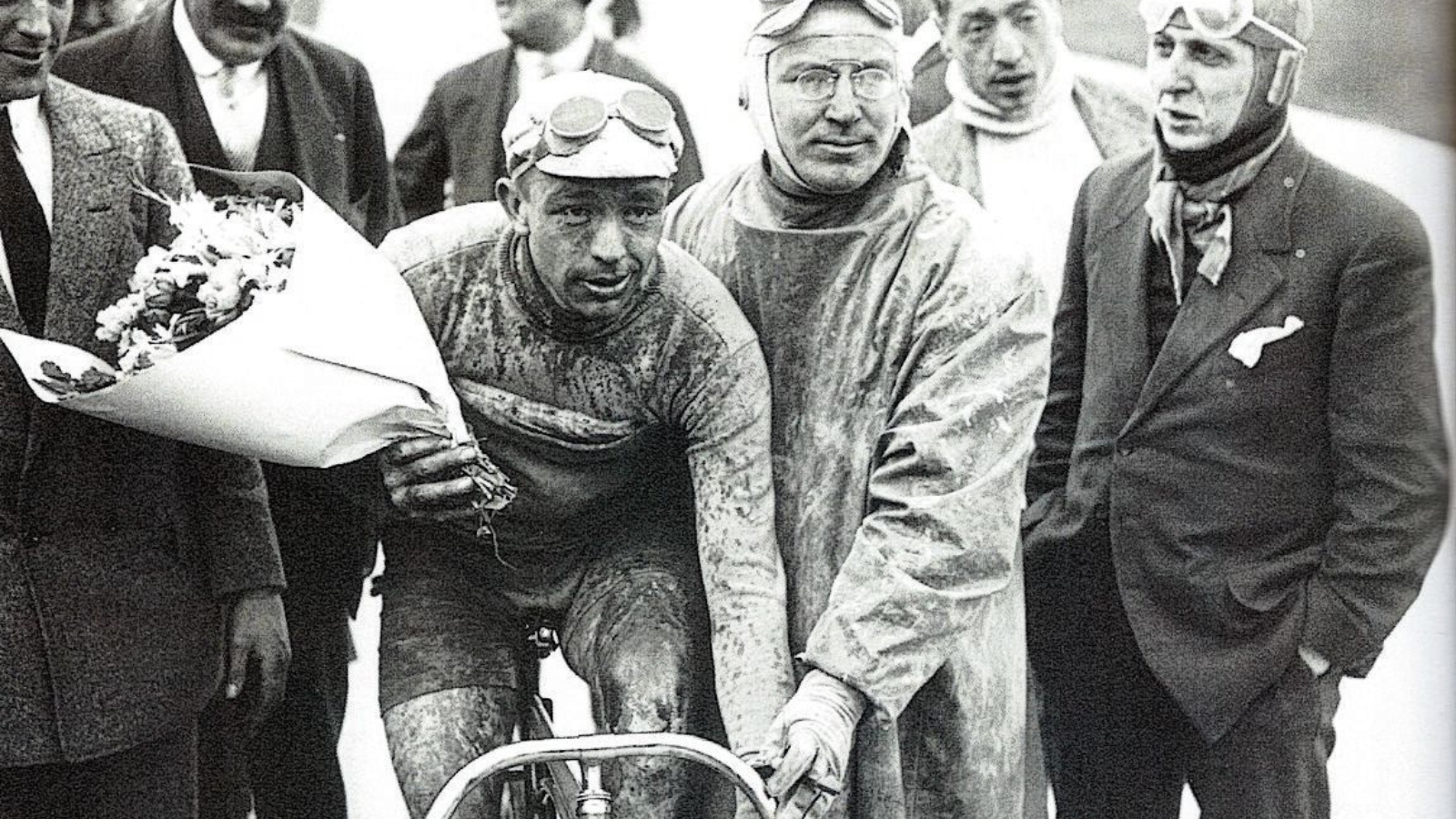Of course, they weren’t called “monuments” those days, but here are some interesting stuff about the winners of the first editions of the five most important one-day races.
Léon Houa, Liége -Bastogne-Liége (1892)

Belgian cyclist Léon Houa (1867-1918) actually won the first three editions of La Doyenne. The first two of them were amateur events. Considering the first Bordeaux-Paris (1891) as important milestone in the history of road cycling races, it’s quite remarkable, how early the organizers of Liége-Bastogne-Liége (Spa-Bastogne-Spa, according to their original plans) had the idea to create a road cycling race. It’s also remarkable, that Liége-Bastogne-Liége is still on. (Several popular races from the end of the 19th century did not survive more than a century.)
Josef Fischer, Paris-Roubaix (1896)

The Bavarian cyclist Josef Fischer (1865- 1953) did know well, how to race extremely long distance races in the final years of 19th century. He won the 582,5 km long Vienna-Berlin in 1893.
Giovanni Gerbi, Giro di Lombardia (1905)
At the beginning of the 20th century, in Italy, more precisely in the most industrial part of the country, thus important centrum of bicycle manufacturing, Lombardy more and more cycling events were held. (Actually, another event, Milano-Torino is older than any Monuments . It was first held in 1876, but did not managed to maintain its importance among the one-day races.)

In the first two years the race was called Milano-Milano, only in 1907 the organizers changed its name to Giro di Lombardia.
Giovanni Gerbi, (1885-1955) the Red Devil was one of the most successful Italian cyclists of the era.
Lucien Petit-Breton, Milano-Sanremo (1907)

Members of the local sportclub in Sanremo contacted with La Gazzetta dello Sport, the organizing newspaper of Giro di Lombardia to create another one-day race in the region. Giovanni Gerbi, who was a local cyclist proved to the organizers, that the Turchino Pass is passable. He also played an important role at the actual race.
Due knowing the course better than any other rider, Gerbi was the favourite of the first edition of Milano-Sanremo. But he has leraned, that his teammate Lucien-Petit Breton (1882-1917), a bigger star would have receive much bigger prize momey in the case of his victory. So, they agreed, that Gerbi would help Petit-Breton and share the prize. Gustave Garrigou almost spoiled their masterplan, but in the end Petit-Breton won the race.
Paul Deman, Ronde van Vlaanderen (1913)
Winner of the first Ronde van Vlaanderen, the youngest race of the five monuments, Paul Deman (1889-1961) had some extraordinary days around the time of Armistice. He was sentenced to death twice and had enormous luck twice, not being executed. Read more on this story >>

IF YOU LIKE PELOTONTALES BLOG,
PLEASE SUPPORT IT WITH A SMALL DONATION VIA PAYPAL
THANK YOU
MORE MONUMENT FUN FACTS
[su_posts posts_per_page=”7″ order=”desc” orderby=”rand”]
